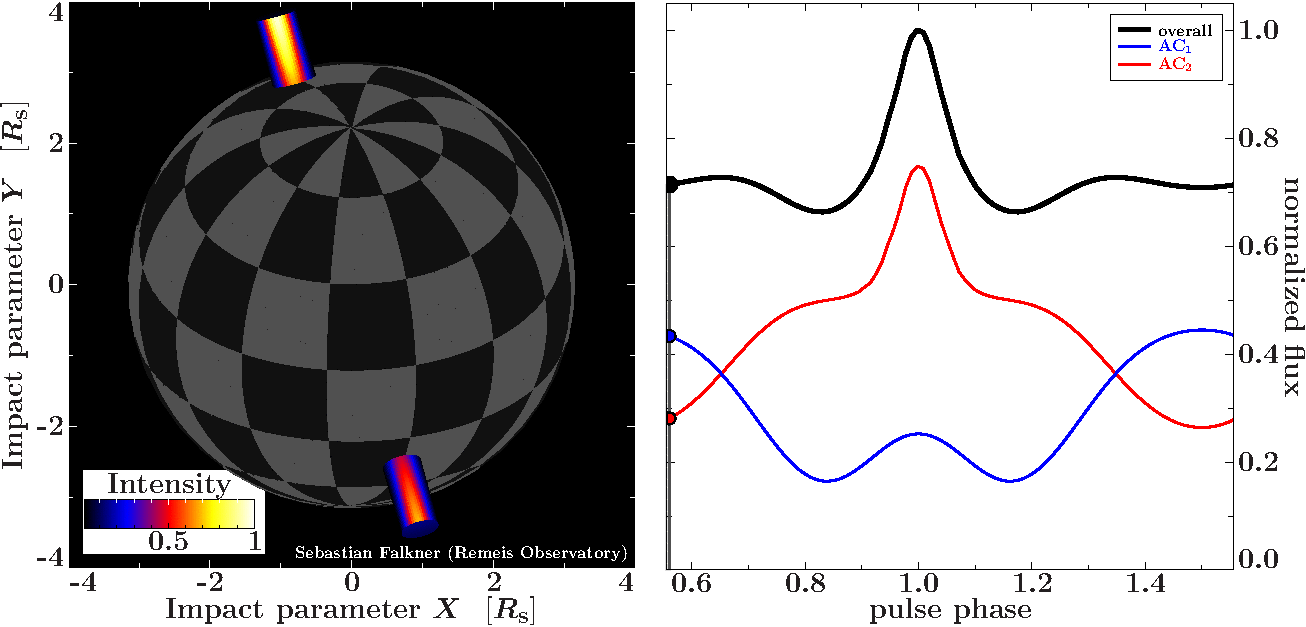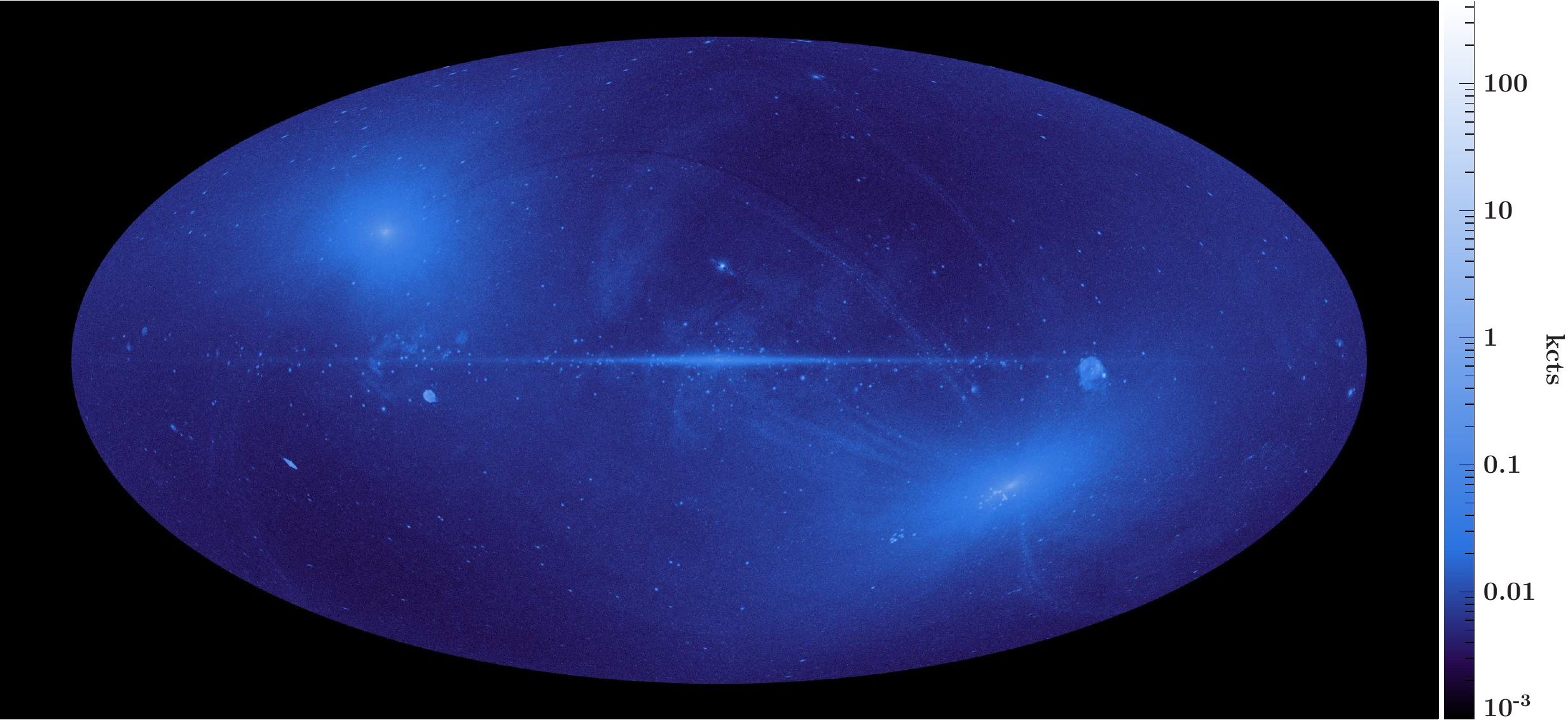Accreting neutron stars
I investigate highly magnetized accreting X-ray pulsars in high mass X-ray binaries (HMXBs). These systems consist of a neutron star and an optical companion star in a close binary orbit. These stars are the remnants of very massive stars, which violently ended their live in a supernova explosion. Neutron stars are among the most compact objects we know. With masses of ∼ 1.4 M\(_\odot\) (sun masses) and radii of ∼ 10 km, they are only 2 to 3 times larger then their Schwarzschild radius. Due to their high compactness, space-time in the neutron star's close vicinity is not flat and general relativity is needed to describe it. Additionally, these pulsars exhibit one of the strongest magnetic fields ∼ 1012 G we have observed. There are no other objects known which would even come close to reaching such strong magnetic fields, e.g., the Earth's field is ∼ 10-1 G and the strongest persistent artificial field created in a laboratory is ∼ 104 G. The strong wind of the companion is captured by the gravitational well of the neutron star and is governed by its strong magnetic field. The captured matter is accreted with rates in the order of ∼ 1017 g/s (approximatly the mass of the Mount Everest each second) onto the neutron star itself. The infalling plasma is forced to follow the field lines onto the poles where accretion columns are formed. There the infalling matter, with free-fall velocities up to 60% of the speed of light, is stopped and its kinetic energy is radiated away in X-rays. The observed spectra (energy resolved flux, which is the photon energy per second and area) exhibit a power-law like continuum and also often show broad absorption features caused by cyclotron resonant scattering off electrons, which are forced into quantized Landau levels by the strong magnetic field. Due to the strong magnetic field the emission regions are localized at the poles. As the magnetic dipol axis does not has to be aligned with the rotational axis, pulsations in the flux with the rotational period are observed. The periods of such so called pulse profiles are in the range of 1 – 1000 s.

Fig. 1: Left: Observed projection in units of Schwarzschild radii (R\(_S\)) of a simulated accreting neutron star with two identical and antipodal, cylindrical accretion columns (ACs). Right: Observed pulse profile of the upper AC (blue), the lower AC (red), and their combination (black).
In order to understand the observations of emission which emerges from the close vicinity of such objects in a physical meaningful manner, general relativistic effects have to be taken into account. Such effects are light bending, which also causes a lensing effect, and gravitational redshift. These effects are especially important for neutron stars where we observe emission from the neutron star’s surface and from its accretion columns. For that purpose I developed a relativistic ray tracing code solving the photon trajectories in the Schwarzschild metric to calculate the observed energy and phase dependent flux based on arbitrary geometries and emission patterns of the emission regions.
The animation on left (Fig. 1) shows the projection of a simulated accreting neutron star onto the observer sky. The emission origins homogeneously from two identically sized, antipodal accretion columns, with a gaussian profile. The corresponding pulse profile features a prominent sharp peak around phase 1, which is associated with the contribution of the lower accretion column. At a closer look, a double projection of this column is observed during this peak, which also explains the sudden rise of the flux. Without light bending this double projection would not be present and the pulse profile would look much different.
